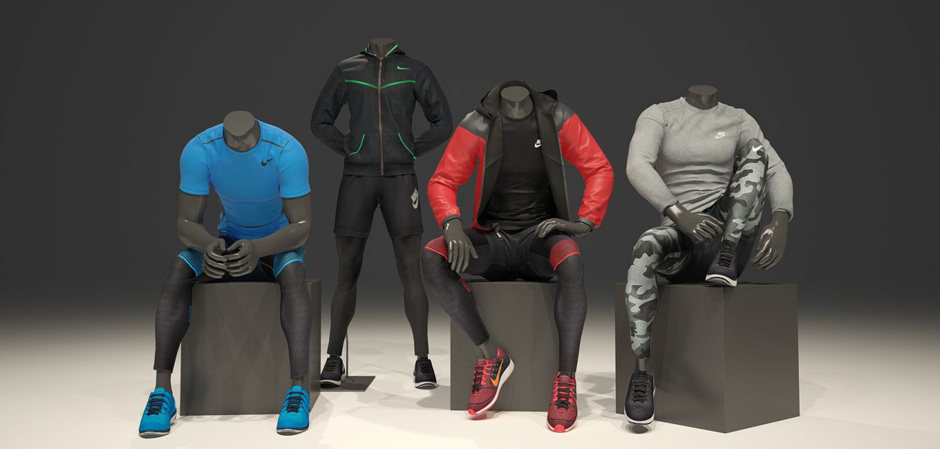Digital technologies in fashion design: expectations VS reality
part 1 part 2 part 3 part 4
There is a lot of talk about digitalization in the light industry today. Viktor Kuzmichev, Professor, Head of the Department of Sewing Design of Ivanovo State Polytechnic University, Professor of Wuhan Textile University (China), talks about new realities, opportunities and the need for three-dimensional design of clothing in a virtual environment.

The history of three-dimensional clothing design dates back to the 1980s, when Japanese clothing manufacturers set themselves the ambitious task of creating a fully automated sewing production. Japanese firms with the participation of Japanese electronics giants managed to develop software and automatic sewing equipment for all stages of technological production. At the same time, a unique system of confection of materials for basic types of women's and men's clothing KAWABATA Evaluation System for fabrics (KES-F) was created, which automatically, without the participation of specialists, gave an opinion on the suitability of the material after testing on a complex of four devices.
Unfortunately, for a number of reasons, the project was not brought to its logical conclusion. Firstly, they decided to postpone full automation and robotization of technological processes of clothing manufacturing: it turned out that there are many countries in the world with cheap labor and this surplus labor is happy to sew clothes in the traditional way. Secondly, it was not possible to automate all the artistic and design stages in a virtual environment, since the developers of 3D CAD faced the main problems with the variety of textile materials and the rapid variability of models. These factors have shown the untimeness of digital fashion design, compared with other industries (for example, automobile construction).

However, since that time, active research and development work on digitalization of three-dimensional modeling of clothing in virtual reality (VR) has begun.
In the 2010s, these works were stimulated by the development of online commerce, for which the possibility of presenting clothing on a digital double of a potential consumer dramatically increased the possibility of selling it. Designers, forced to arrange shows of new collections twice a year or more often, saw a real prospect of saving in virtual fashion shows, and the legendary Alexander MacQuinn was the first to realize this opportunity. For industrial enterprises demonstrating their products to buyers, replacing material samples in showrooms with virtual models reduced the risk of developing unclaimed clothing models. In a word, the economic engine of digital technologies in the Internet environment in two independent directions - customization of already created and presentation of future clothing models - has only positive sides.
The development of digital technologies goes through several stages, starting from the CAD of clothing (so-called 2D design) in the direction of 3D design for standard and individual figures (see figure). Naturally, the contents of the source databases required for each level of technology are different from each other.
BUILDING DRAWINGS
The process of three-dimensional design of clothing is possible only if there are several digital counterparts of material objects - drawings (patterns), textile materials, human figures.
The systems of planar construction of CAD clothing successfully operate with digitized drawings at all stages, from their construction to the execution of layouts. Digital drawings of parts can be obtained on the basis of material analogues using digitizers. Knowledge of the coordinates of the points was necessary to describe the contours of the parts and orient the digitized parts in the layouts in a certain way.

From the point of view of the prospects for further digitalization, the main problem is the lack of the necessary mathematical apparatus, which is a prerequisite for the formalization of knowledge and its transfer to the digital environment. The designers will understand me: all our calculation formulas for building drawings are extremely simple, if not primitive. There are no practical formulas for matching the sizes of adjacent parts, and due to their absence, it is impossible to predict the future shape of clothing, especially if the constructive additions are greater than the minimum values. Designers also do not try to justify their proposed artistic and design solutions of new three-dimensional silhouette forms using mathematical functions (it is no coincidence that Balenciaga entrusted the creation of new images to computers in the hope of seeing acceptable solutions in chaotic combinations). It turns out to be a vicious circle: there is a lot of information about the design of clothes, and its translation into digital form, which reduces the risks of obtaining erroneous three-dimensional models, is very difficult. While three-dimensional design is limited to the simplest basic assortment, as a rule, single-layer clothing.
To be continued.
Photo: expert and from open sources